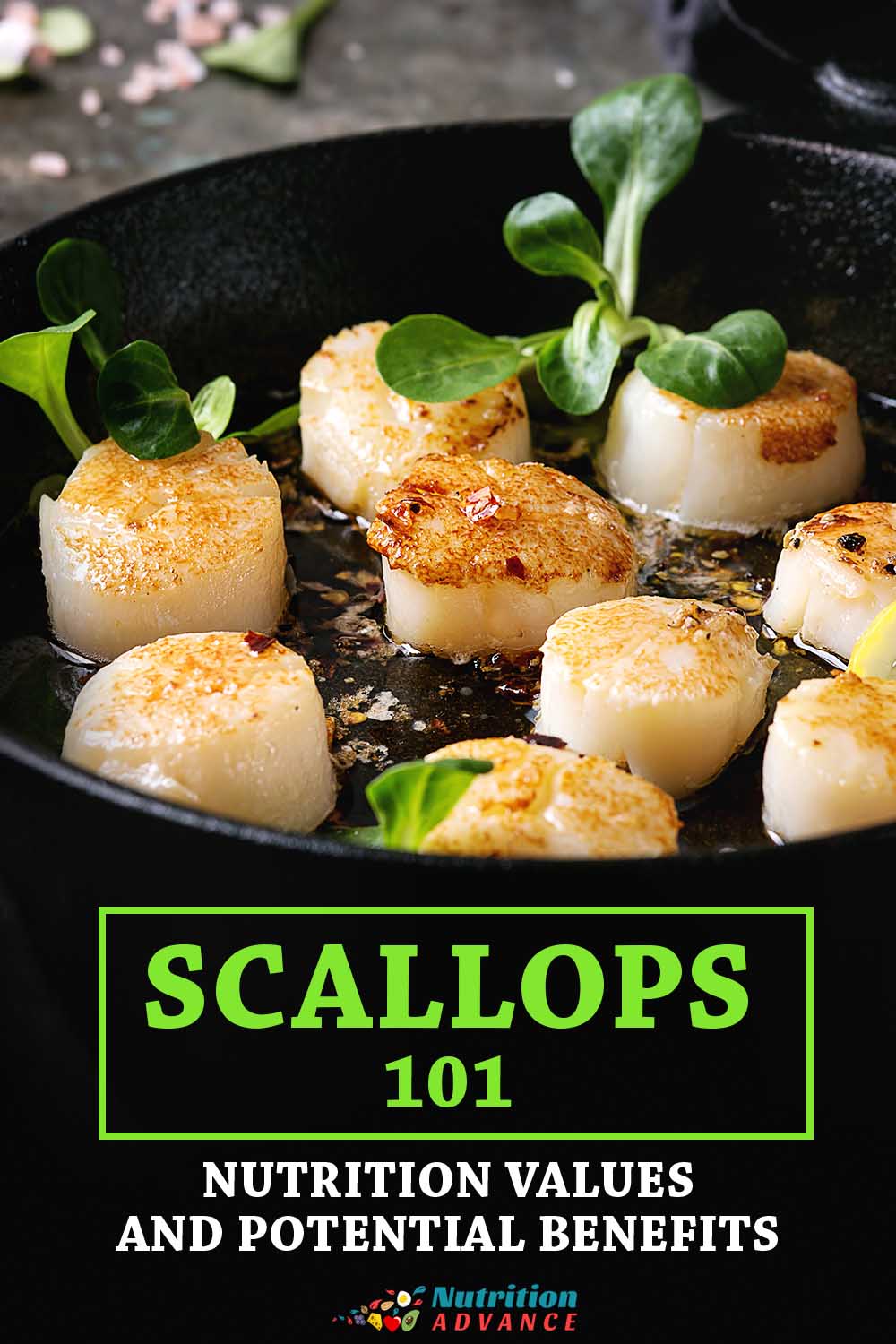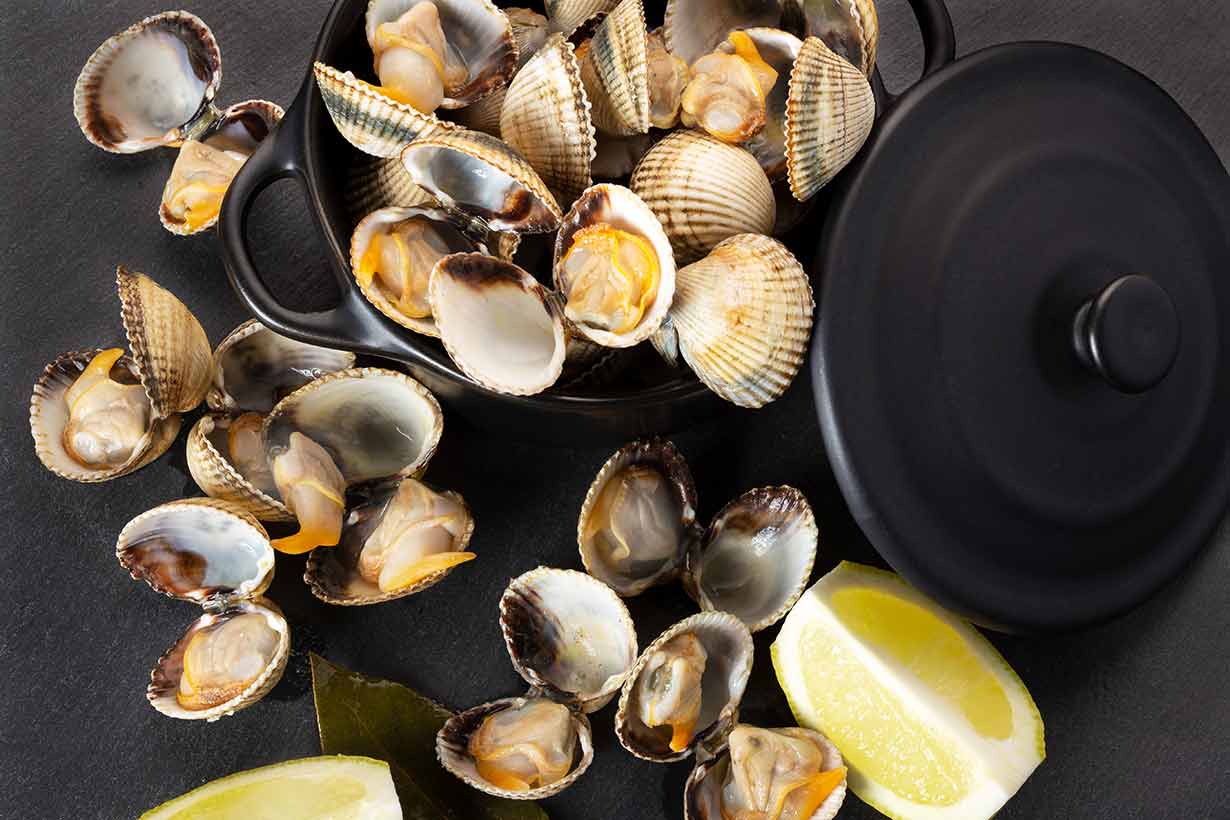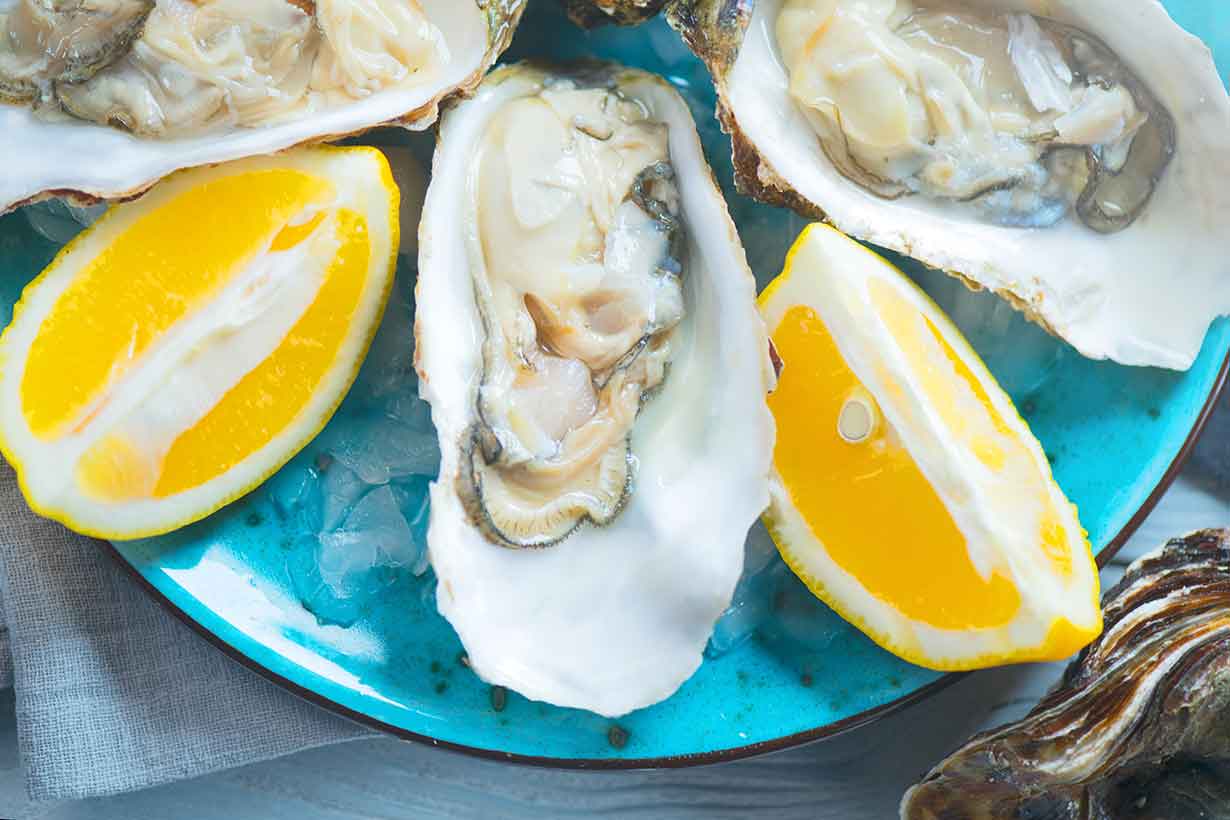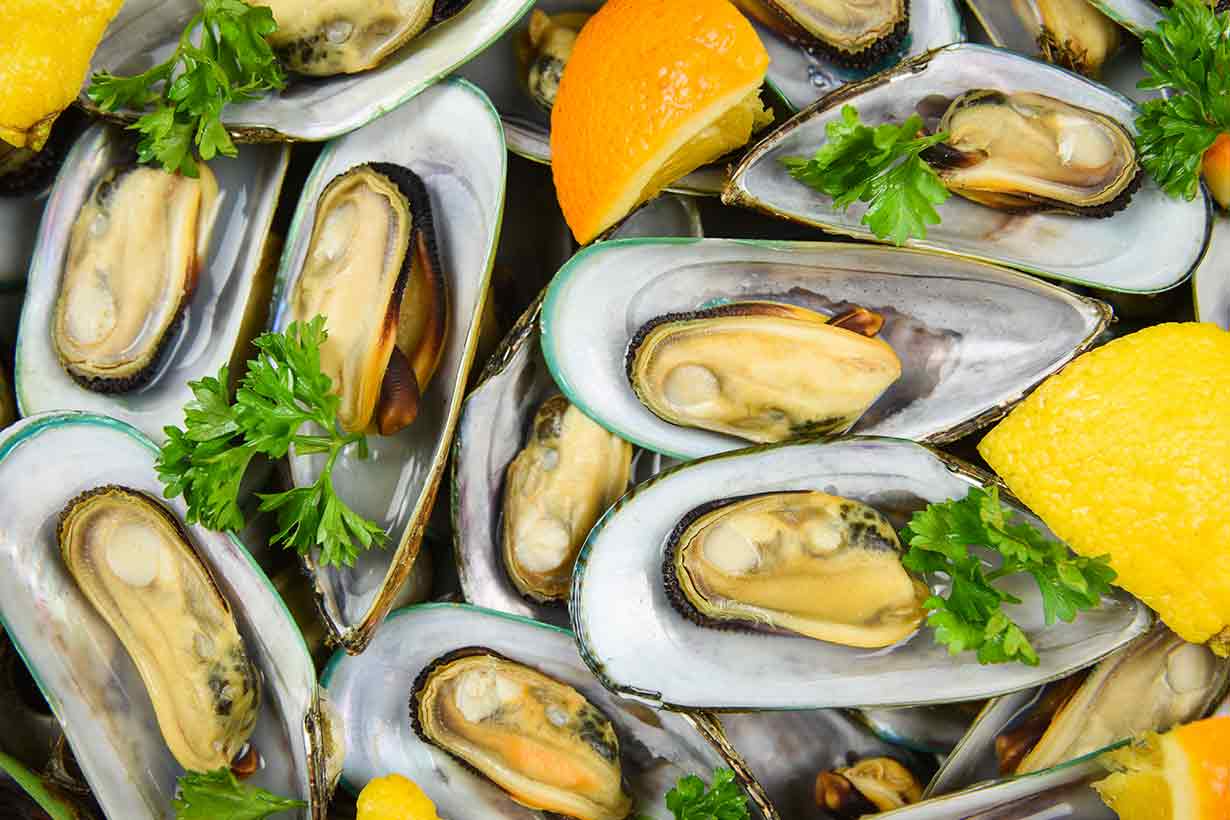Sea scallops are a variety of shellfish with similar traits to other species like clams, mussels, and oysters.
There are two distinct types of this little shellfish: sea scallops and bay scallops.
Both varieties are prized for their taste, and scallops are one of the most popular varieties of seafood.
This article provides a guide to scallops and their full nutritional values and potential benefits.

Table of contents
What are Scallops?
Scallops belong to the mollusk group of shellfish alongside abalone, clams, mussels, and oysters.
Known as a bivalve mollusk, scallops earn this name through their two-part shell that opens and closes on a hinge.
Unlike most other mollusks, scallops can swim. They do this by opening and closing their shells, and the water pressure propels them forward.
Generally speaking, scallops sold as food refer to the scallop adductor muscle: a round-shaped white flesh. They are usually sold as they are and without their shell.
Scallops can also sometimes be sold with the roe present, an orange-colored reproductive organ found within the shell.
However, it is rarer for scallops to be sold with their roe than just the white flesh adductors. This is because the roe can potentially accumulate paralytic shellfish toxins (PST), which can cause paralytic shellfish poisoning (PSP). These toxins are not present in the adductor muscles (1).
Types of Scallops
There are actually many different types of scallop, but as previously mentioned, there are two main varieties used as food:
- Bay scallops: these tend to be very small, with an average diameter of just over 1cm (about half an inch). They are found close to the shore in bays, hence their name. Compared to sea scallops, bay scallops are said to have a slightly more tender texture.
- Sea scallops: sea scallops are approximately three times larger than bay scallops, and their average diameter is around 4cm (1.5 inches). Sea scallops live further far out in the ocean and are typically found at a greater depth of between 10m and 100m (2).
There are many different sub-species of scallops, but they are all quite similar nutritionally.
Nutrition Facts
What do scallops offer nutritionally? Let’s take a look at their typical nutritional values per 100 gram raw weight.
All data showed below is from the USDA’s FoodData Central database; daily values have been calculated from the FDA’s published daily values (3, 4).
| Name | Amount | % Daily Value |
|---|---|---|
| Calories | 69 kcal | 3% |
| Carbohydrate | 3.18 g | 1% DV |
| Fiber | 0 g | |
| Sugars | 0 g | |
| Fat | 0.49 g | <1% DV |
| Saturated fat | 0.13 g | 1% DV |
| Monounsaturated fat | 0.05 g | |
| Polyunsaturated fat | 0.13 g | |
| Omega-3 | 0.11 g | |
| Omega-6 | 0.01 g | |
| Protein | 12.06 g | 24% DV |
| Dietary cholesterol | 24.0 mg | 8% DV |
Vitamins
- Vitamin B12: 59% DV
- Choline: 12% DV
- Folate: 4% DV
- Vitamin B6: 4% DV
- Niacin (B3): 4% DV
- Pantothenic acid (B5): 4% DV
- Riboflavin (B2): 2% DV
- Thiamin (B1): 1% DV
- Vitamin D: <1% DV
- Vitamin A (RAE): <1% DV
Minerals
- Phosphorus: 27% DV
- Selenium: 23% DV
- Sodium: 17% DV
- Zinc: 8% DV
- Magnesium: 5% DV
- Potassium: 4% DV
- Iron: 2% DV
- Copper: 2% DV
- Manganese: 1% DV
- Calcium: <1% DV
Benefits of Scallops
While the existing scientific research on scallops as a food source is limited, we can see from their nutritional profile that they provide significant nutritional value.
Unfortunately, there are no research-proven benefits of scallops as the studies just haven’t been done.
However, consuming scallops would likely offer benefits due to the broad range of essential nutrients they contain.
On this note, there are not many foods that can provide 12 grams of protein and more than 10% of the daily value for multiple vitamins and minerals – for only 69 calories.
Protein Density
To elaborate on the protein content of scallops, they provide 12 grams of protein per 100 grams, which is a moderate amount.
However, they are extremely high in protein per calorie. For instance, 300 grams of scallops would offer 36 grams of protein for only 207 calories (3).
This is approximately the same protein density per calorie as foods like skinless chicken breast (5).
Potential Downsides of Scallops
We often see advice to increase our seafood consumption due to the relative lack of omega-3 in human diets (6, 7).
However, as a very-low-fat type of seafood, scallops contain minimal amounts of omega-3: just 0.12 grams per 100g (3).
While this is not a ‘downside’ per se, other shellfish like oysters, mussels, and clams offer a bit more omega-3 if this is a consideration.
Here are some other potential downsides of scallops to consider.
Scallops Are Very Expensive
Any food prized for its culinary uses tends to be a bit more expensive than other foods.
This trend is magnified when the demand for a particular food outstrips the supply, and unfortunately, this is the case with scallops.
As a result, scallops tend to be quite expensive to buy.
Some people may consider scallops worth the money due to their taste alone, but not all of us can justify spending on food than we have to.
From a strictly nutritional perspective, there are many foods that offer better nutritional value for a lower price.
For instance, sardines and other oily fish provide many of the same nutrients as scallops but with higher protein-per-gram and the extra benefit of their omega-3 content.
Foodborne Illness
Similar to other shellfish, scallops have been linked to foodborne illnesses like vibrio and hepatitis A.
In fact, there was an outbreak of hepatitis A in Hawaii during the summer of 2016 that hospitalized seventy-four people and resulted in two deaths. This outbreak was traced back to a delivery of scallops from the Philippines consumed raw from retailers and restaurants (8).
These risks can be reduced by safer food handling on the distribution side and by consumers ensuring the scallops are properly cooked rather than eaten raw (8).
Vibrio is another potentially serious foodborne illness. Consuming raw or undercooked shellfish (including scallops) is one of the biggest risk factors for infection. According to the Centers for Disease Control (CDC), the best way to prevent such infections is to ensure shellfish are thoroughly cooked (9).
Allergic Reactions
Allergies to crustacean species of shellfish (such as shrimp and crab) are quite common, but mollusk allergies are less prevalent.
However, they do still exist, and it is possible to be allergic to mollusks like scallops, clams, and oysters.
Symptoms of shellfish allergy can include (but are not limited to) nausea, hives, wheezing, difficulty breathing, dizziness, and stomach cramps. The American College of Allergy, Asthma, and Immunology states that individuals with any past shellfish allergy should seek medical advice before eating any variety of shellfish (10).
Final Thoughts
Overall, scallops are a tasty food that provides significant nutritional value for minimal calories.
However, other foods can provide similar nutritional properties for a more affordable price, and without the potential downsides.
That said, for those who enjoy the taste and don’t mind the price, scallops are an excellent dietary choice with culinary and nutritional benefits.









